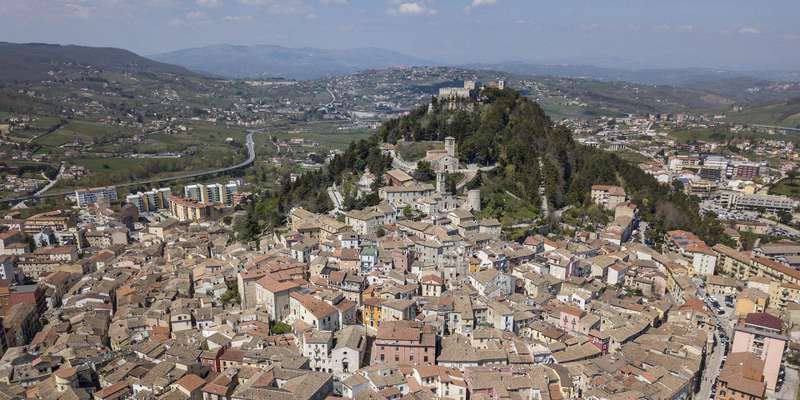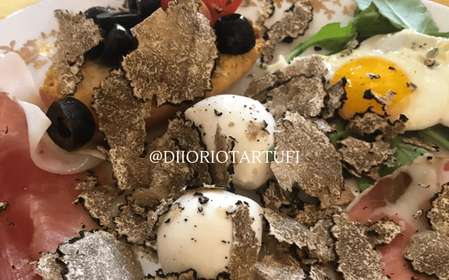- Home
- Useful Tips
- Structuring a 3-day cultural...
Planning a meaningful cultural trip to Campobasso often leaves travelers overwhelmed by its under-the-radar status. Unlike crowded Italian hotspots, this Molise capital requires local knowledge to uncover its authentic medieval charm and seasonal traditions. Nearly 60% of visitors miss key cultural events simply because regional tourism information remains fragmented. The frustration of returning home only to discover overlooked Byzantine churches or artisan workshops is real. This carefully crafted approach solves that problem by blending must-see landmarks with living traditions, ensuring you experience Campobasso's soul beyond the guidebooks.


Day 1: Decoding Campobasso's layered history through its architecture
Begin your cultural immersion at the 15th-century Monforte Castle, where panoramic views reveal why this strategic hilltop location shaped Campobasso's development. Descend through time along Via Mazzini, noticing how Liberty-style buildings blend with older stonework. The real magic happens when you pause at lesser-known spots like the ex-convent of Santa Maria delle Grazie - its faded frescoes tell stories most day-trippers miss. For lunch, seek out family-run trattorias near Piazza Pepe that still serve 'cazzarielli', hand-rolled pasta that's been a local staple since medieval times. Afternoon light best illuminates the Cathedral's peculiar mix of neoclassical and Romanesque elements, while nearby Museo Sannitico holds surprisingly sophisticated Samnite artifacts. End your day with an evening passeggiata along Corso Vittorio Emanuele, observing how generations interact around the same benches and cafes.
Day 2: Living traditions beyond the tourist trail
Wednesday mornings offer the authentic Mercato Coperto, where third-generation vendors sell mountain cheeses and rare Molise saffron. Time your visit to coincide with seasonal events - summer brings the Mysteries procession of floating statues, while autumn means chestnut festivals in nearby villages. The secret? Local B&Bs often know exact dates before they're published online. Reserve afternoon hours for the artisan quarter near Via Chiarizia, where blacksmiths still craft ironwork using Renaissance techniques. Don't just observe - Antonio's workshop welcomes visitors to try simple metal-stamping. As dusk falls, join residents at the hidden viewpoint near Chiesa del Sacro Cuore for golden hour over the Matese mountains. Dinner should feature 'pampanella', a spicy pork dish slow-cooked as farmers did for centuries. Ask about the 'crusco' pepper garnish - its preparation is a cultural artifact itself.
Day 3: Nature and spirituality in Molise's heartland
Devote your final morning to the Abbazia di San Vincenzo al Volturno, a 30-minute drive revealing how Campobasso connects to wider Molise culture. This 8th-century monastic complex hides breathtaking Carolingian-era frescoes few international visitors see. Pack a picnic from Panificio Di Nucci's wood-fired bread and local cacioricotta cheese. The afternoon presents a choice: active travelers can hike the tratturi (ancient sheep trails) with stunning valley views, while history lovers may prefer Villa de Capoa's botanical gardens, where medicinal plants are still grown following medieval monastic traditions. Your farewell dinner should be at a 'caciocavallo' cheese dairy-turned-agriturismo, where the aging process happens in the same caves used since the 1800s. Time permitting, one last passeggiata past illuminated fountains in Piazza Municipio reveals how Campobasso's layers of history coexist vibrantly after dark.
Essential logistics for stress-free cultural exploration
Campobasso's true rhythm emerges when you align with local patterns. Most museums close 1-4pm, creating the perfect opportunity for long lunches at Slow Food-certified spots like Trattoria Da Nino. Free municipal wifi in piazzas helps with spontaneous research, but download offline maps beforehand - the old town's spiderweb alleys confuse GPS. Consider mid-week visits when heritage sites feel more intimate, avoiding the Saturday farmer's market crowds if you prefer tranquility. Smart travelers book August trips around Ferragosto celebrations, when the city transforms with open-air concerts and centuries-old folk dances. For accommodations, seek converted palazzos near Piazza Savoia to stay within walking distance of evening cultural events. Those driving should note ZTL zones - many hotels provide permits, but the train station area offers affordable parking with easy bus links to the historic center.
